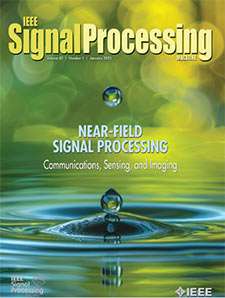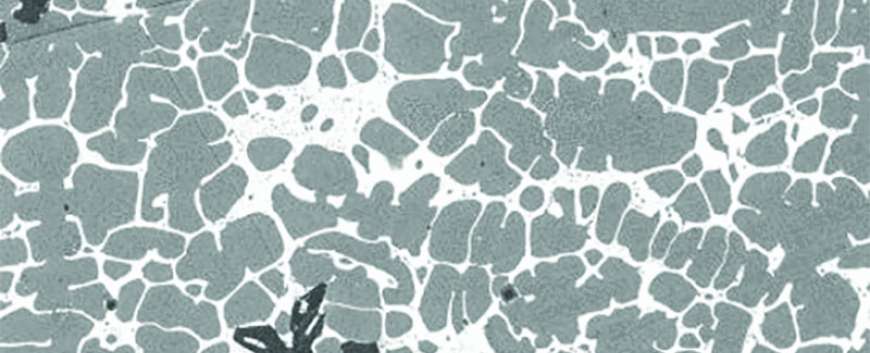- Our Story
- Publications & Resources
- Publications & Resources
- Publications
- IEEE Signal Processing Magazine
- IEEE Journal of Selected Topics in Signal Processing
- IEEE Signal Processing Letters
- IEEE Transactions on Computational Imaging
- IEEE Transactions on Image Processing
- IEEE Transactions on Information Forensics and Security
- IEEE Transactions on Multimedia
- IEEE Transactions on Signal and Information Processing over Networks
- IEEE Transactions on Signal Processing
- IEEE TCI
- IEEE TSIPN
- Data & Challenges
- Submit Manuscript
- Guidelines
- Information for Authors
- Special Issue Deadlines
- Overview Articles
- Top Accessed Articles
- SPS Newsletter
- SigPort
- SPS Resource Center
- Publications FAQ
- Blog
- News
- Dataset Papers
- Conferences & Events
- Community & Involvement
- Professional Development
- For Volunteers
- Information for Authors-OJSP
-
Home
Conferences & Workshops13 September 2027 to 16 September 2027Conferences & Workshops29 October 2025 to 31 October 2025Conferences & Workshops26 October 2025 to 29 October 2025Conferences Events IEEE Signal Processing Magazine IEEE SPL Article IEEE TIFS Article IEEE TMM Article IEEE TSP Article Jobs in Signal Processing Lectures Machine Learning Seasonal Schools Signal Processing News SPM Article SPS Distinguished Lectures SPS Newsletter Article SPS Webinar SPS Webinars SPS Webinar Series Webinar webinars
-
Our Story
What is Signal Processing?

The technology we use, and even rely on, in our everyday lives –computers, radios, video, cell phones – is enabled by signal processing. Learn More » -
Publications & Resources
-
SPS Resources
- Signal Processing Magazine The premier publication of the society.
- SPS Newsletter Monthly updates in Signal Processing
- SPS Resource Center Online library of tutorials, lectures, and presentations.
- SigPort Online repository for reports, papers, and more.
- SPS Feed The latest news, events, and more from the world of Signal Processing.
-
SPS Resources
-
Conferences & Events
-
Community & Involvement
-
Membership
- Join SPS The IEEE Signal Processing Magazine, Conference, Discounts, Awards, Collaborations, and more!
- Chapter Locator Find your local chapter and connect with fellow industry professionals, academics and students
- Women in Signal Processing Networking and engagement opportunities for women across signal processing disciplines
- Students Scholarships, conference discounts, travel grants, SP Cup, VIP Cup, 5-MICC
- Young Professionals Career development opportunities, networking
- Get Involved
-
Technical Committees
- Applied Signal Processing Systems
- Audio and Acoustic Signal Processing
- Bio Imaging and Signal Processing
- Computational Imaging
- Image Video and Multidimensional Signal Processing
- Information Forensics and Security
- Machine Learning for Signal Processing
- Multimedia Signal Processing
- Sensor Array and Multichannel
- Signal Processing for Communication and Networking
- Signal Processing Theory and Methods
- Speech and Language Processing
- Technical Working Groups
- More TC Resources
-
Membership
-
Professional Development
-
Professional Development
- Signal Processing Mentorship Academy (SigMA) Program
- Micro Mentoring Experience Program (MiME)
- Distinguished Lecturer Program
- Distinguished Lecturers
- Distinguished Lecturer Nominations
- Past Lecturers
- Distinguished Industry Speaker Program
- Distinguished Industry Speakers
- Distinguished Industry Speaker Nominations
- Industry Resources
- IEEE Training Materials
- Jobs in Signal Processing: IEEE Job Site
-
Career Resources
- SPS Education Program Educational content in signal processing and related fields.
- Distinguished Lecturer Program Chapters have access to educators and authors in the fields of Signal Processing
- Job Opportunities Signal Processing and Technical Committee specific job opportunities
- Job Submission Form Employers may submit opportunities in the area of Signal Processing.
-
Professional Development
-
For Volunteers
-
For Board & Committee Members
- Board Agenda/Minutes* Agendas, minutes and supporting documentation for Board and Committee Members
- SPS Directory* Directory of volunteers, society and division directory for Board and Committee Members.
- Membership Development Reports* Insight into the Society’s month-over-month and year-over-year growths and declines for Board and Committee Members
-
For Board & Committee Members
Popular Pages
Today's:
- Information for Authors
- (SPAWC 2025) 2025 IEEE Workshop on Signal Processing and Artificial Intelligence for Wireless Communications
- Call for proposals: 2027 IEEE Conference on Artificial Intelligence (CAI)
- (ISBI 2026) 2026 IEEE 23rd International Symposium on Biomedical Imaging
- IEEE Transactions on Information Forensics and Security
- IEEE Transactions on Multimedia
- Awards & Submit Award Nomination
- IEEE Transactions on Image Processing
- (ASRU 2025) 2025 IEEE Automatic Speech Recognition and Understanding Workshop
- Submit a Manuscript
- (ICME 2026) 2026 IEEE International Conference on Multimedia and Expo
- Information for Authors-SPL
- IEEE Journal of Selected Topics in Signal Processing
- IEEE Signal Processing Letters
- SPS SLTC/AASP TC Webinar: Advanced Methods in Regional Speech Enhancement and Far-to-Near-Field Transformation
All time:
- Information for Authors
- Submit a Manuscript
- IEEE Transactions on Image Processing
- IEEE Transactions on Information Forensics and Security
- IEEE Transactions on Multimedia
- IEEE Transactions on Audio, Speech and Language Processing
- IEEE Signal Processing Letters
- IEEE Transactions on Signal Processing
- Conferences & Events
- IEEE Journal of Selected Topics in Signal Processing
- Information for Authors-SPL
- Conference Call for Papers
- Signal Processing 101
- IEEE Signal Processing Magazine
- Guidelines
Last viewed:
- What’s Next for Speech Recognition? Explore the Innovations Shaping the Future — New Our Digital Life Podcast Episode
- PhD Studentship in Immersive Audio Technology
- Information for Authors
- Membership
- Call for proposals: 2027 IEEE Conference on Artificial Intelligence (CAI)
- 2027 IEEE International Workshop on Machine Learning for Signal Processing (MLSP 2027)
- 2025 59th Asilomar Conference on Signals, Systems, and Computers
- 2025 14th International Symposium on Image and Signal Processing and Analysis (ISPA)
- (ISBI 2026) 2026 IEEE 23rd International Symposium on Biomedical Imaging
- Member Discounts: Save on car rental
- Distinguished Lecture: Prof. Dr. Justin Dauwels (TU Delft)
- About SP Letters
- IEEE Signal Processing Letters
- Tainan Chapter Receives the 2012 Chapter of the Year Award
- Login Error
The Markov Random Field in Materials Applications: A synoptic view for signal processing and materials readers
You are here
Publications & Resources
Signal Processing Magazine
For Authors
Top Reasons to Join SPS Today!
1. IEEE Signal Processing Magazine
2. Signal Processing Digital Library*
3. Inside Signal Processing Newsletter
4. SPS Resource Center
5. Career advancement & recognition
6. Discounts on conferences and publications
7. Professional networking
8. Communities for students, young professionals, and women
9. Volunteer opportunities
10. Coming soon! PDH/CEU credits
Click here to learn more.
The Markov Random Field in Materials Applications: A synoptic view for signal processing and materials readers
The Markov random field (MRF) is one of the most widely used models in image processing, constituting a prior model for addressing problems such as image segmentation, object detection, and reconstruction. What is not often appreciated is that the MRF owes its origin to the physics of solids, making it an ideal prior model for processing microscopic observations of materials. While both fields know of their respective interpretations of the MRF, each knows very little about the other’s version of it. Hence, both fields have “blind spots,” where some concepts readily appreciated by one field are completely obscured from the other. With this in mind, the objectives of this article are to 1) develop a synoptic view of the MRF, the related Gibbs distribution, and the Hammersley–Clifford theorem that links them, in such a way that signal processing and materials readers will see them from the same perspective; and 2) explain physics-based regularization using the MRF and describe how it can provide insight into the performance of MRF-based segmentation methods. While the MRF has already been used in many machine learning contexts, we will use a simpler, more transparent method to illustrate the fundamental behavior of the MRF, with the understanding that this behavior should be inherent in more complex learning approaches.
The Markov random field (MRF) is one of the most widely used models in image processing, constituting a prior model for addressing problems such as image segmentation, object detection, and reconstruction. What is not often appreciated is that the MRF owes its origin to the physics of solids, making it an ideal prior model for processing microscopic observations of materials. While both fields know of their respective interpretations of the MRF, each knows very little about the other’s version of it. Hence, both fields have “blind spots,” where some concepts readily appreciated by one field are completely obscured from the other.
SPS Social Media
- IEEE SPS Facebook Page https://www.facebook.com/ieeeSPS
- IEEE SPS X Page https://x.com/IEEEsps
- IEEE SPS Instagram Page https://www.instagram.com/ieeesps/?hl=en
- IEEE SPS LinkedIn Page https://www.linkedin.com/company/ieeesps/
- IEEE SPS YouTube Channel https://www.youtube.com/ieeeSPS
Home | Sitemap | Contact | Accessibility | Nondiscrimination Policy | IEEE Ethics Reporting | IEEE Privacy Policy | Terms | Feedback
© Copyright 2025 IEEE - All rights reserved. Use of this website signifies your agreement to the IEEE Terms and Conditions.
A public charity, IEEE is the world's largest technical professional organization dedicated to advancing technology for the benefit of humanity.













